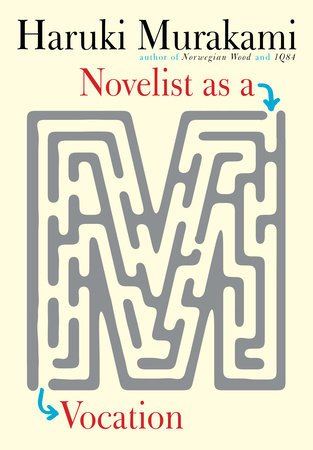Haruki Murakami about finding his unique writing style
This blog has been written in English since its inception, because it is often easier for me to express myself in English. Recently, I came across a fascinating excerpt from Haruki Murakami's Novelist as a Vocation about writing in a language other than your native tongue (my translation from a Polish version):
“As a Japanese born in Japan, I've spoken Japanese since childhood, so I have some sort of content in me made up of various tightly packed Japanese words and phrases. When I try to express scenes and feelings inside me in a text, the elements of this content rush in different directions, and the system occasionally crashes. When I try to write in a foreign language, however, my vocabulary and expressions are limited, so this does not happen. I also discovered that, even with a limited vocabulary and phraseology, different feelings and intentions can be expressed quite well by juxtaposing them correctly. In short, my point is that you don't have to use difficult words, and beautiful impressions aren't required to arouse feelings in a reader.”
The author goes on to explain how he wrote his first novel, Hear the Wind Sing, in English and then translated it into Japanese, eventually developing his own style:
“Of course, my English writing skills were very limited. My syntax was simple and my vocabulary was limited. This naturally made my sentences short. Even if I had a lot of very complex ideas, I would not have been able to convey them well. I was only able to communicate the information using simple words, paraphrase the intentions into understandable paraphrases, remove unnecessary details from descriptions, give everything a compact shape, and cram it into a small container. This resulted in a very unsophisticated text. But as I continued writing with great effort, gradually my own rhythm of sentences began to emerge from it.”
“Anyway, after discovering how interesting the effects of writing in a foreign language are and learning how to write in your own rhythm, I put the typewriter in my closet and pulled out the paper and pen again. I sat down at the table and <<translated>> the English text into Japanese, which was around one chapter long. This translation was not a literal translation, but rather something closer to a transplant to another ground. The inevitable result was that a completely new style in Japanese emerged. It was also my own individual style. I found it myself. I thought to myself then, <<Oh, that's how I should write in Japanese.>>”
“Sometimes people say to me, <<Your text reads like a translation,>> and while I'm not sure what they mean by that, I think that this remark is right in some ways and wrong in another. There is probably some truth in it, because in the literal sense of the word I "translated" the first chapter of my novel. However, it was merely part of a process. This path was rather to create a neutral and fluid style, without unnecessary embellishments. I didn't mean to use <<diminished Japanese>>. I wanted to use a language that was as far removed from the so-called <<fictional style>> or <<fictional structure>> and to use it to <<tell>> a novel with my own natural voice. For this, I had to put everything on a single card. You could even say that Japanese was only a functional tool for me at the time.”
“In any case, using this newly acquired style, I rewrote the previously completed <<not very interesting>> version of the novel. The plot was more or less the same, but the style changed completely. And the impression while reading turned out to be completely different. This is how the novel known as Hear the Wind Sing came to be. It did not satisfy me at all. I reread this new version and found it to be immature and with many flaws. That I only managed to express twenty or thirty percent of what I wanted to say. But I also felt like I was able to take a significant step forward, because I wrote all my initial text, which was essentially shaped like a novel.”
